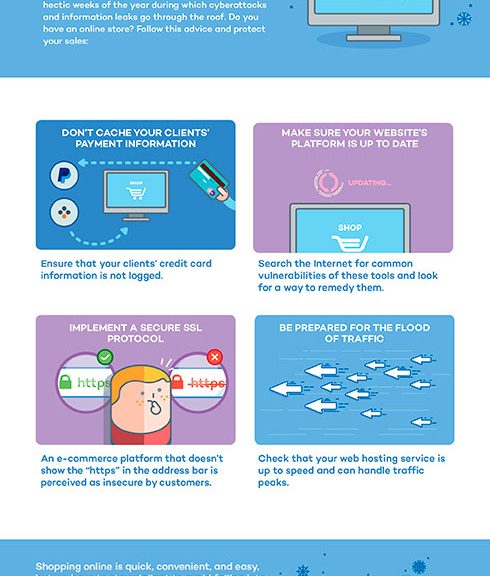‘ART’ Automatically Pinpoints Attacks and Anomalies at Endpoints
Panda Security, the world’s leader in advanced cybersecurity solutions, and Logtrust, the real-time Big Data-in-Motion firm, announced the availability of the Advanced Reporting Tool (ART), as an optional module of Panda Security’s Adaptive Defense, which automatically generates Security and IT intelligence that allows organizations to pinpoint attacks, unusual behaviors, and detect internal misuse of systems and networks.
ART’s unique capabilities enable calculations, graphical visualization and alerts on data monitored, collected and correlated by Panda Adaptive Defense on companies’ endpoints. ART allows those companies to control the risks in the workplace and take security and resources management actions on end-points, including those associated with IoT networks and devices.
“Malware volume has grown exponentially, and the number of potentially vulnerable endpoints within an organization has proliferated, including data streams coming from IoT networks which may compose one of the most serious threats companies face,” said Pedro Castillo, CEO, Logtrust. “The combined capabilities of Panda and Logtrust allowed Panda to create a tool that applies real-time big data analytics to pinpoint attacks, unusual behaviors as well as detecting internal misuse of the corporate systems and network.”
Security Analytics that Border on Prescience
Panda Adaptive Defense represents a new security model that correlates data from multiple sources, bringing the capabilities of Big Data and machine learning to detect, analyze and prevent advanced threats. By partnering with Logtrust, Panda was able to leverage a cloud-based platform capable of both collecting a wide range of data and rapidly analyzing large volumes of data in machine real-time.
“Adaptive Defense, in combination with Advanced Reporting Tool (ART), is a leap forward in how companies approach cyber-security incidents, unusual behavior and resources misuse by both external factors and insiders, so it naturally requires tremendous speed and power to achieve its objectives,” said Iratxe Vazquez, Product Manager, Panda Security. “Logtrust’s Flat-Ultra-Low-Latency time-series data analytics platform, which processes over 150,000 events per second/per core, meets perfectly the performance and functionalities of our ART’s requirements.”
Additionally, Logtrust’s highly visual, customizable and intuitive interface affords the ability to:
- Easily create and configure dashboards with key indicators and adaptive search options
- Set default and custom alerts related to security incidents, risk situations, user access to critical information and application/network resource usage
A Penetrating, Holistic View of the Vulnerability Landscape
Panda Adaptive Defense relies on an innovative security model based on three principles: continuous monitoring of applications running on computers and servers, automatic classification using machine learning on Big Data platform in the cloud and security incidents experts analyze those applications that haven’t been classified automatically to be certain of the behavior of everything that is run on the company’s systems.
The massive amount of data, collected at endpoints and correlated in Panda Security’s Big Data platform is also cumulated at LogTrust Platform to provide security and IT managements insights, such as external and internal threats, diagnose critical vulnerabilities, and alert in real-time, so that businesses can immediately prevent or minimize Security and IT issues. Additional benefits of Advanced Reporting Tool (ART) Module working with Logtrust include the ability to:
- Perform Forensic Analysis. Go back up to 12 months to correlate data from endpoints, identify the malware and pinpoint every place it has touched, and analyze the application’s vulnerabilities.
- Completely Map All Vulnerabilities. Gain visibility into all machines, applications and elements running on any endpoint to assess vulnerability.
- Monitoring and Policies. Monitor and control use of corporate resources to determine if it is normal and expected, or a matter that needs to be addressed.
About Panda Security
Founded in 1990, Panda Security is the world’s leading cloud-based security solutions company. Based in Spain, the company has a direct presence in over 80 countries, products translated into over 23 languages and more than 30 millions of users worldwide.
Throughout its history, Panda Security has established a series of innovative milestones that have been later adopted by the rest of the industry. In fact, Panda has been the first vendor to propose a new technological approach based on three strategic elements: Cloud Computing, Big Data and Behavioral Analysis. This brings a new security model that assures the complete classification of all active processes on the systems. By analyzing, categorizing and correlating all this data about cyber-threats, its platform can leverage contextual intelligence to reveal patterns of malicious behavior and initiate prevention, detection and remediation routines, to counter known and unknown threats. Assuring the maximum level of protection ever seen in the cybersecurity industry. Visit www.pandasecurity.com and www.pandasecurity.com/intelligence-platform/ for more information.
About Logtrust
Logtrust is a Real-Time Big Data-in-Motion platform offering Fast Data, Big Data analytics through a solution that enables real-time analytics for operations, fraud, security, marketing, IoT and other aspects of business. Recognized as a Gartner Cool Vendor 2016, Logtrust is intuitive, interactive, and collaborative, with no coding required, guided widgets, and out-of-the-box advanced interactive contextual dashboards. The platform provides a completely real-time experience, with new events always available for query and visualization, and pre-built queries always updated with the most recent events. The highly customizable solution works non-intrusively with your system, with agentless collectors and forwarders, platform remote APIs to check health, and all capabilities callable via REST APIs. Service is always on with cross-cloud region disaster recovery, and data is always hot and unmodified (to meet data reliability and integrity compliance requirements). Logtrust is located at the epicenter of Silicon Valley in Sunnyvale, CA, and further serves its global clients through offices in New York and Madrid. Visit www.logtrust.com for more information.
The post Panda and Logtrust Stem Cyber-threats with Real-time Analytics appeared first on Panda Security Mediacenter.

 Don’t cache your clients’ payment information. The best way to avoid problems is by thoroughly verifying that credit card numbers are never stored in your data base and never pass through your servers. It’s as easy as resorting to one of the many payment solutions on the market, such as PayPal or Braintree, which take it upon themselves to handle that sensitive data for you.
Don’t cache your clients’ payment information. The best way to avoid problems is by thoroughly verifying that credit card numbers are never stored in your data base and never pass through your servers. It’s as easy as resorting to one of the many payment solutions on the market, such as PayPal or Braintree, which take it upon themselves to handle that sensitive data for you.




 Visibility: Traceability and visibility of every action taken by running applications.
Visibility: Traceability and visibility of every action taken by running applications. Detection: Constant monitoring of all running processes and real-time blocking of targeted and zero-day attacks, and other advanced threats designed to slip past traditional antivirus solutions.
Detection: Constant monitoring of all running processes and real-time blocking of targeted and zero-day attacks, and other advanced threats designed to slip past traditional antivirus solutions. Response: Providing forensic information for in-depth analysis of every attempted attack as well as remediation tools.
Response: Providing forensic information for in-depth analysis of every attempted attack as well as remediation tools. Prevention: Preventing future attacks by blocking programs that do not behave as goodware and using advanced anti-exploit technologies.
Prevention: Preventing future attacks by blocking programs that do not behave as goodware and using advanced anti-exploit technologies.


